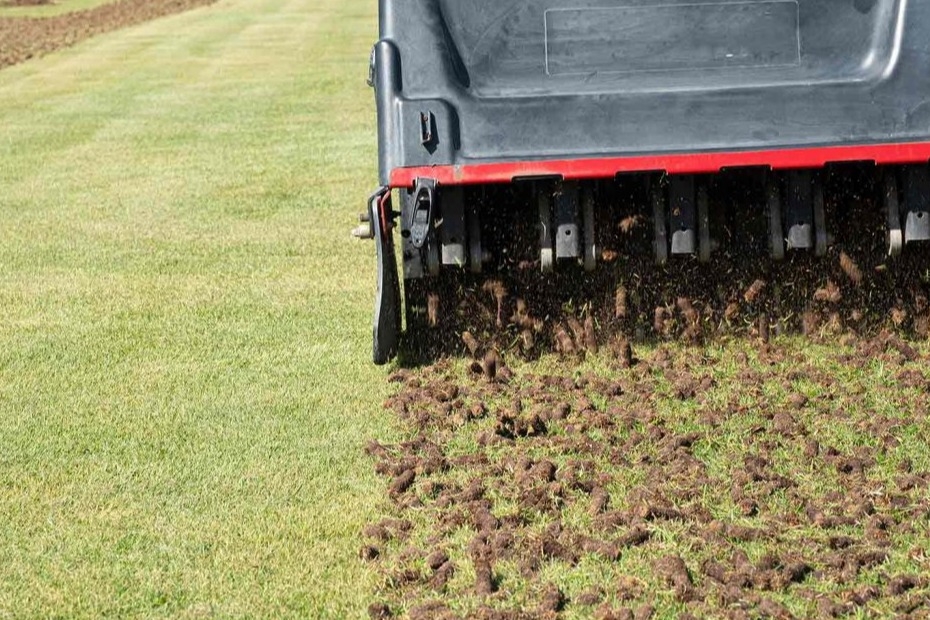The Importance of Aeration: Enhancing Soil and Water Health
By Nick Linden - April 14, 2025
The Importance of Aeration: Enhancing Soil and Water Health
Aeration is a crucial process for maintaining healthy soil and water systems, whether in gardening, agriculture, or aquatic environments. It improves air circulation, prevents compaction, and enhances the overall quality of soil and water. Let’s explore why aeration matters and how to do it effectively.
What is Aeration?
Aeration refers to the process of introducing air into a medium—be it soil, water, or another environment. This allows for better oxygen flow, which is essential for plant roots, beneficial microorganisms, and aquatic life.
Types of Aeration
✔️ Enhances Root Growth – By allowing oxygen to penetrate the soil, aeration encourages stronger, deeper root systems.
✔️ Prevents Soil Compaction – Loosening the soil ensures that water and nutrients reach plant roots more efficiently.
✔️ Improves Water Drainage – Aerated soil prevents water from pooling on the surface, reducing the risk of plant diseases and root rot.
✔️ Boosts Microbial Activity – Beneficial microbes thrive in oxygen-rich environments, aiding in decomposition and nutrient cycling.
✔️ Maintains Water Quality – In water bodies, aeration prevents algae blooms, removes foul odors, and supports a balanced ecosystem.
Best Practices for Aeration
For Lawns & Gardens: Use a core aerator annually, especially in high-traffic areas. If soil is heavily compacted, aerate more frequently.
For Farms & Fields: Implement aeration strategies like deep tilling or cover cropping to maintain soil structure.
For Ponds & Lakes: Install diffused aeration systems or floating fountains to keep oxygen levels stable.
Whether you're a gardener, farmer, or pond owner, aeration is a simple yet powerful way to boost plant health, improve soil quality, and maintain water clarity. Regular aeration ensures that your plants and aquatic ecosystems thrive, leading to a healthier environment overall.
Go Back Aeration is a crucial process for maintaining healthy soil and water systems, whether in gardening, agriculture, or aquatic environments. It improves air circulation, prevents compaction, and enhances the overall quality of soil and water. Let’s explore why aeration matters and how to do it effectively.
What is Aeration?
Aeration refers to the process of introducing air into a medium—be it soil, water, or another environment. This allows for better oxygen flow, which is essential for plant roots, beneficial microorganisms, and aquatic life.
Types of Aeration
- Soil Aeration
- Over time, soil becomes compacted due to foot traffic, machinery, or natural settling. This makes it difficult for air, water, and nutrients to reach plant roots.
- Aeration techniques, such as core aeration, spiking, and liquid aeration, help loosen the soil, promoting healthier root growth.
- Water Aeration
- In ponds, lakes, and aquariums, stagnant water can lead to oxygen depletion, which harms aquatic life.
- Mechanical aerators, fountains, and natural aeration methods (like waterfalls) help increase dissolved oxygen levels, supporting fish and beneficial bacteria.
✔️ Enhances Root Growth – By allowing oxygen to penetrate the soil, aeration encourages stronger, deeper root systems.
✔️ Prevents Soil Compaction – Loosening the soil ensures that water and nutrients reach plant roots more efficiently.
✔️ Improves Water Drainage – Aerated soil prevents water from pooling on the surface, reducing the risk of plant diseases and root rot.
✔️ Boosts Microbial Activity – Beneficial microbes thrive in oxygen-rich environments, aiding in decomposition and nutrient cycling.
✔️ Maintains Water Quality – In water bodies, aeration prevents algae blooms, removes foul odors, and supports a balanced ecosystem.
Best Practices for Aeration
For Lawns & Gardens: Use a core aerator annually, especially in high-traffic areas. If soil is heavily compacted, aerate more frequently.
For Farms & Fields: Implement aeration strategies like deep tilling or cover cropping to maintain soil structure.
For Ponds & Lakes: Install diffused aeration systems or floating fountains to keep oxygen levels stable.
Whether you're a gardener, farmer, or pond owner, aeration is a simple yet powerful way to boost plant health, improve soil quality, and maintain water clarity. Regular aeration ensures that your plants and aquatic ecosystems thrive, leading to a healthier environment overall.
